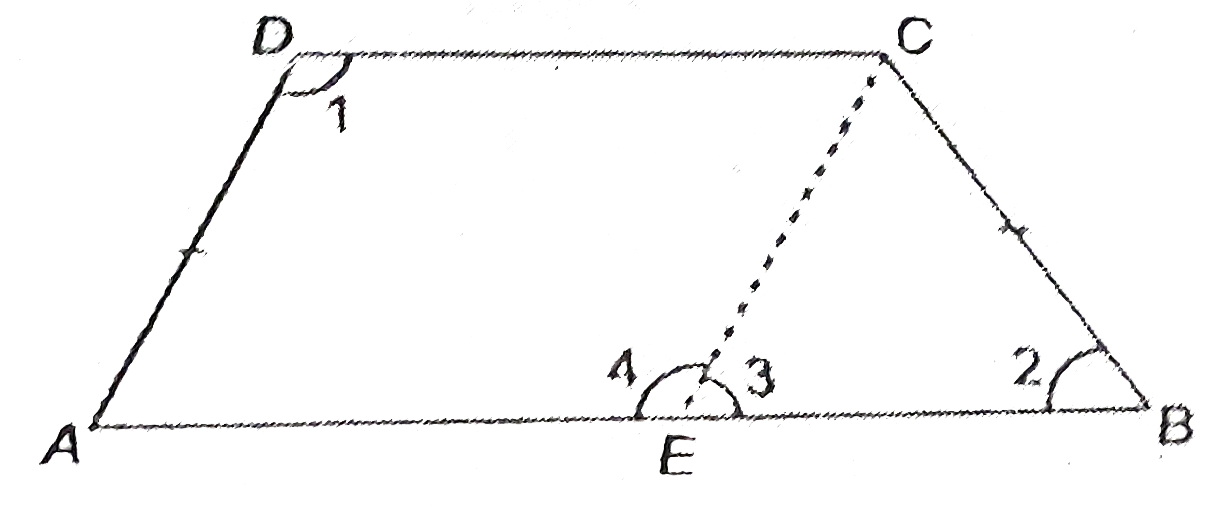If the non-parallel sides of a trapezium are equal, prove that it is cyclic.
Given : Trapezium ABCD in which and .
To Prove :
Construction: Draw .
Proof : Since, ABCD is a trapezium in which
and
is a parallelogram ( pairs of opposite sides of a parallelogram )
(opposite sides of a parallelogram are equal)
But (given)
(angles opposite to equal sides are eqaul ).....(1)
Now, (L.P.A.)
[form (1)]
Hence, ABCD is cyclic.

Topper's Solved these Questions
- BOOK - NAGEEN PRAKASHANCHAPTER - CIRCLE EXERCISE - Exercise 10a22videos
CIRCLE
- BOOK - NAGEEN PRAKASHANCHAPTER - CIRCLE EXERCISE - Exercise 10b19videos
CIRCLE
- BOOK - NAGEEN PRAKASHANCHAPTER - AREA OF PARALLELOGRAMS AND TRIANGLESEXERCISE - Revision Exercise (long Answer Question)5videos
AREA OF PARALLELOGRAMS AND TRIANGLES
- BOOK - NAGEEN PRAKASHANCHAPTER - CO-ORDINATE GEOMETRY EXERCISE - Exercise8videos
CO-ORDINATE GEOMETRY
Similar Questions
Knowledge Check
- Question 1 - Select One
Find the distance between the two parallel sides of a trapezium if the area of the trapezium is 500 sq m and the two parallel sides are equal to 30 m and 20 m, respectively.
A20 cmB15 cmC18 cmD25 cm
Consider the following statements :
1. If non-parallel sides of a trapezium are equal, then it is cyclic.
2. If the chord of a circle is equal to its radius, then the angle subtended by this chord at a point in major segment is 30∘.
Which of the above statements is/are correct?View SolutionIf two non-parallel sides of a trapezium are equal, it is cyclic. OR An isosceles trapezium is always cyclic.
View SolutionThe opposite sides of a trapezium are parallel.
View SolutionE and F are respectively the midpoints of the non-parallel sides AD and BC of a trapezium ABCD. Prove that
(i) EF∣∣AB,
(ii) EF=12(AB+CD).View SolutionIf the parallel sides of a trapezium are 8 cm and 4 cm, M and N are the mid points of the diagonals of the trapezium, then length of MN is
View SolutionProve that the segment joining the middle points of two non-parallel sides of a trapezium is parallel to the parallel sides and half of their sum.
View SolutionA circle is inscribed in a trapezium in which one of the non-parallel sides is perpendicular to the two parallel sides. Then A) the diameter of the inscribed circle is the geometric mean of the lengths of the parallel sides B) the diameter of the inscribed circle is the harmonic mean of the lengths of the parallel sides C) the area of the trapezium is the area of the rectangle having lengths of its sides as the lengths of the parallel sides of the trapezium D) the area of the trapezium is half the area of the rectangle having lengths of its sides as the lengths of the parallel sides of the trapezium
View Solution

